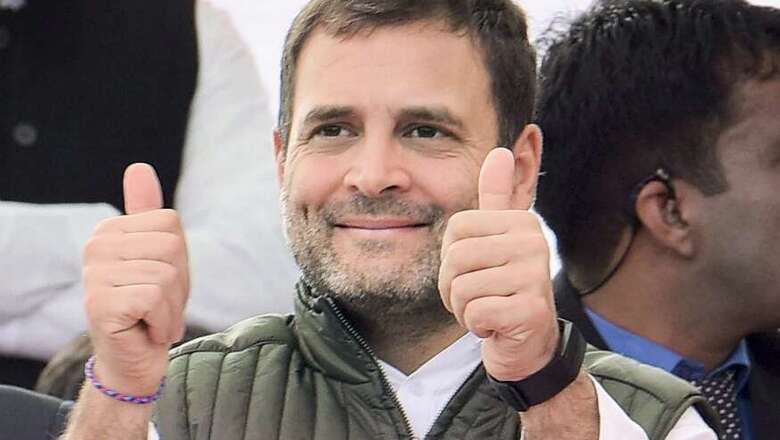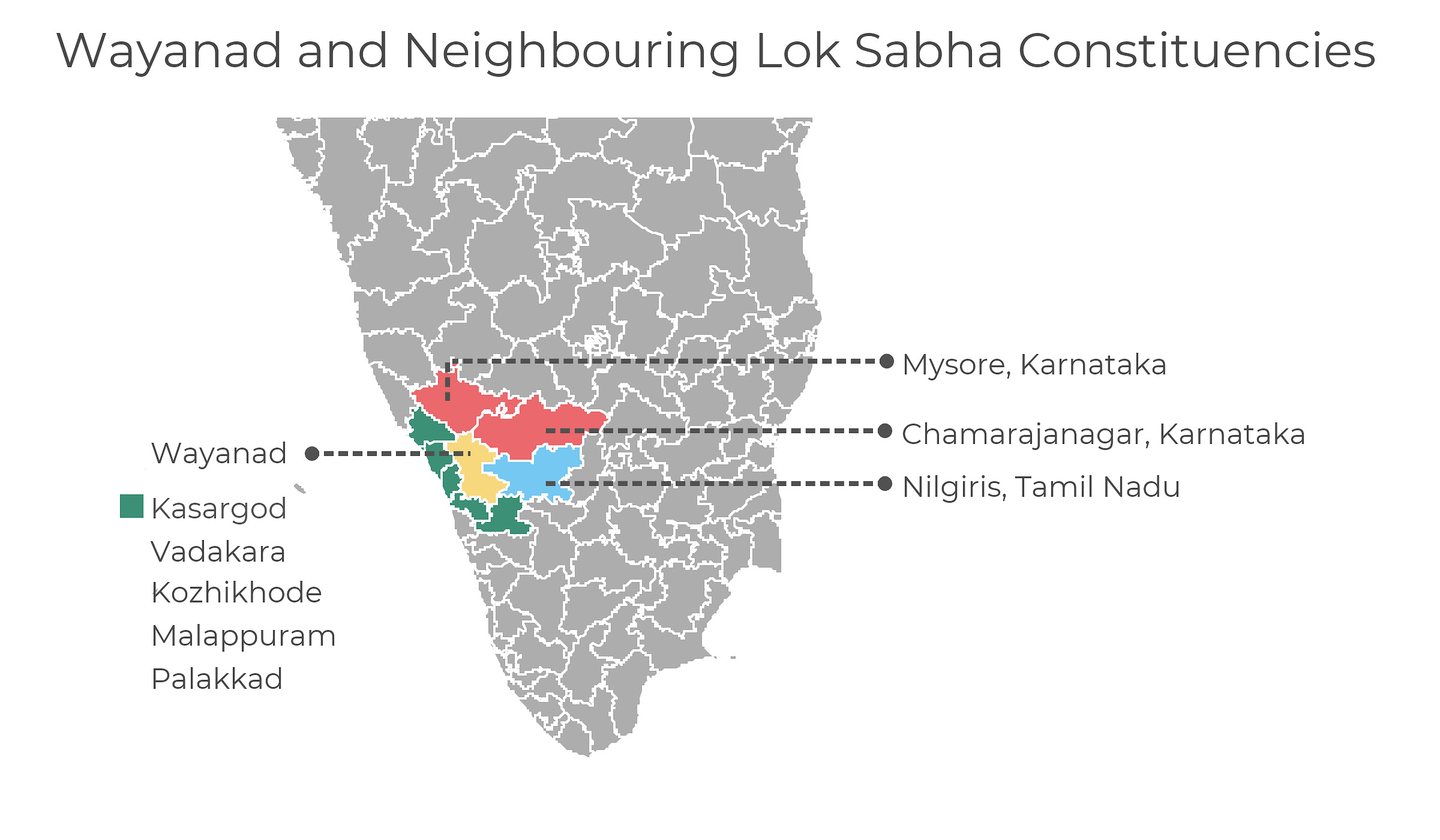
views
While many political observers believe that Rahul Gandhi’s entry to Parliament has been made easy, with the road now passing through Wayanad in Kerala, the Gandhi family scion and the Congress party may find themselves staring at an uphill task of battling the Left forces in the state.
With the local Communist party leaders – from both the CPI and CPI (M) – already hinting towards putting forth a strong fight, the question that arises is, why would Gandhi choose a Left bastion to make inroads in South?
Ever since Gandhi’s candidature from the Wayanad Lok Sabha seat was announced, political stalwarts have hailed the move as a safe bet, claiming the party has chosen a safe seat for its president.
The party, while making the announcement, said that Gandhi contesting from Wayanad is meant to send a “message to the southern states that they are deeply respected and valued,” and to further unite them. However, a look at the demographics , the past performances of parties in Wayanad and its neighboring constituencies, shows that the Congress’ decision was a calculated one.
Success Over the Last Decade
Wayanad was carved out after the 2008 Delimitation (redrawing of boundaries of constituencies) exercise. In the two Lok Sabha elections that the seat has seen so far, MI Shanavas, who passed away last year, won both times for the Congress even though his margin of victory came down drastically in 2014. While Shanavas won the seat with a comfortable margin of 1,53,439 votes (18.63 per cent) in 2009, he saw a close escape in 2014 when his margin came down to mere 20,870 votes (2.28 per cent).
Among the seven Assembly segments – Mananthavady, Sulthanbathery, Kalpetta, Thiruvambady, Eranad, Nilambur, Wandoor – that fall in this constituency, the Congress-led United Democratic Front (UDF) had won all seven in 2009. The alliance had again secured five assembly segments during the 2014 general election, with the Left Democratic Front (LDF) winning the remaining two.
Even in the Assembly elections of 2011, the UDF had won six seats in this parliamentary constituency. However, after the 2016 elections, UDF holds just three seats and the LDF rules four seats in the region at present. However, it should be noted that while the LDF just edged past the Congress alliance on two seats with a vote margin of 0.9 per cent in Mananthavady and 2.2 per cent in Thiruvambady, the UDF on the other hand, had a comfortable lead on its share of seats.
Taking on the Left
Gandhi’s decision to contest from Wayanad was seen by some as Congress’ attempt to consolidate its base in south India. For others, most prominently the CPI and CMI-M leaders, the move is being viewed as a direct challenge to the Left parties in the state.
Prakash Karat who was the General Secretary of CPI from 2005 to 2015, told reporters that the decision “goes against the Congress' national commitment to fight the BJP, as in Kerala it is the LDF which is the main opposition force against the saffron party.” Upon analyzing voting patterns in Wayanad in both the parliamentary and the assembly elections, it becomes clear why one could interpret Congress’ decision to contest in Wayanad as an opposing force to the Left. Congress leader M I Shanavas won the seat in both the 2009 and 2014 Lok Sabha elections by getting 49.8% and 41.2% of the votes, respectively. Currently, the seat lies vacant, following Shanavas’ death in November 2018.
Gandhi’s main opponent for the upcoming elections is CPI’s P P Suneer—the LDF’s candidate for Wayanad. In the 2009 and 2014 elections, the CPI came second with a vote share of 31.2% and 38.9%.
In 2016 assembly elections held in the state, three out of the seven assembly constituencies that make-up the Wayanad constituency voted for a CPM candidate and two voted for the Congress. In the 2011 assembly elections, four of the constituencies voted for the Congress while the most that CPM candidates could achieve was coming in a close second in five of the seven constituencies.
The Spillover Effect?
Congress’ claim that the decision to choose Wayanad for Gandhi is aimed to “unite the southern states of the country,” in a sense, can be better understood by the fact that the constituency, which is located in the northern part of the state, sits at a trijunction of Kerala, Karnataka and Tamil Nadu.
This makes Wayanad directly share its border with Mysore and Chamarajnagar constituency in Karnataka and Nilgiris in Tamil Nadu.

Wayanad will go to polls in the third phase (April 23) of the upcoming Lok Sabha elections, while elections in South Karnataka—where Congress-JD(S) alliance is expected to have an advantage in caste dynamics—and Tamil Nadu will be held in the second phase (April 18). With Gandhi set to campaign in Wayanad, whether his presence will affect voters in the neighbouring constituencies or beyond will be something to watch out for once results are announced on May 23.
In 2014, Nilgiris was won by the All India Dravida Munnetra Kazhagam (AIADMK). Before that, the constituency was bagged by the now M K Stalin-led Dravida Munnetra Kazhagam (DMK) in 2009 and the Congress in 2004. Whereas, the Bharatiya Janata Party (BJP) had won the seat in 1999 and 1998.
In the case of Chamarajnagar in Karnataka, Congress had secured the seat in both 2014 and 2009, while JD(S) had won the seat in 2004. Mysore, however, has dwindled between the BJP and Congress in every election since 1998, with BJP winning the seat in 2014.
The common factor among all three constituencies is the high presence of Scheduled Caste (SC) population in the region.
Additionally, Wayanad is surrounded by five constituencies in Kerala itself. These are: Kannur, Vadakara, Kozhikhode, Malappuram, and Palakkad. Out of these, Congress-led UDF had won five in 2009. Again in 2014, the alliance had won three of the five constituencies. However, two of these seats were won by a margin of less than one per cent of votes (one each by the UDF and the LDF). Even a minor swing either way could benefit any alliance in the upcoming elections.
If Congress is able to convert the ‘unity’ among the Southern states that it has been claiming to bring with its decision, in votes in its favour, the votes swing could go towards the UDF. And, if it is resonated in the neighbouring constituencies or beyond, Congress could be looking for substantial—if not significant—gains in the South.
Demographics
Earlier, Prime Minister Narendra Modi, in a veiled attack Gandhi’s candidature from Wayanad, said that some leaders have fled to a “minority-dominated” seat to escape “Hindu anger”.
The possibility of politically motivated attempts made my leaders to polarise masses on the basis of religion notwithstanding, Wayanad does have a significant Muslim population. According to Census 2011, the constituency has a 40-45 per cent of concentration of Muslim, as well as Hindus. However, some estimates peg Muslim population at over 50 per cent. Christians at the same time, make 15-20 per cent of the population.




















Comments
0 comment